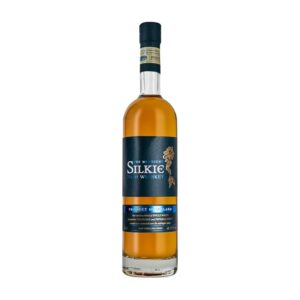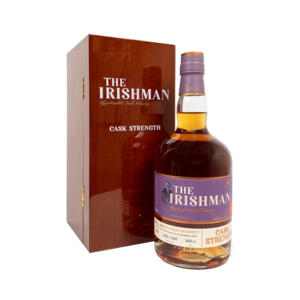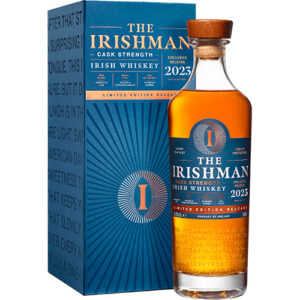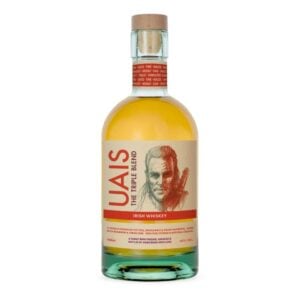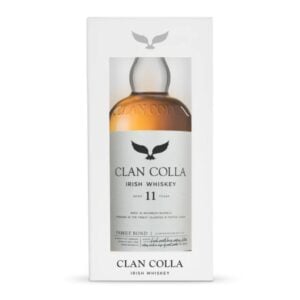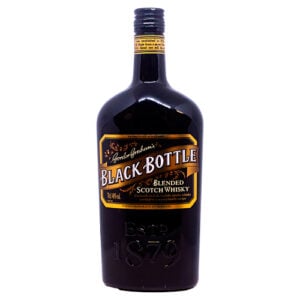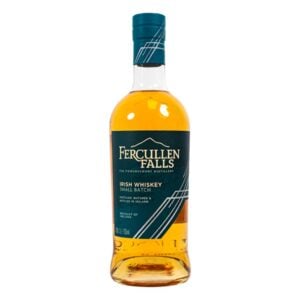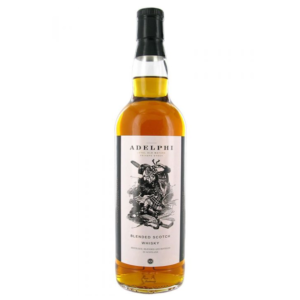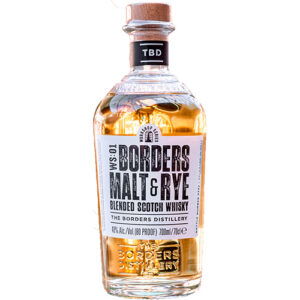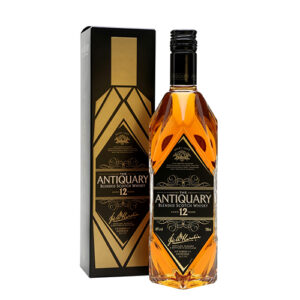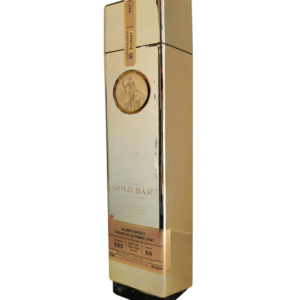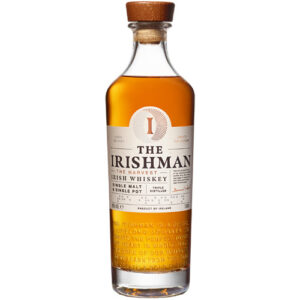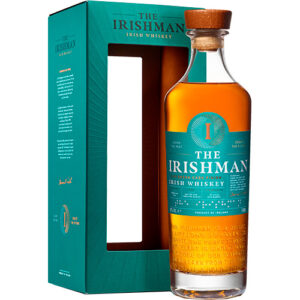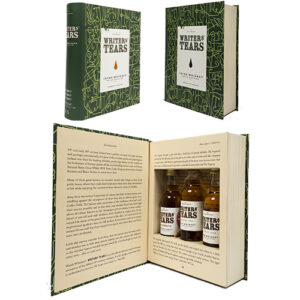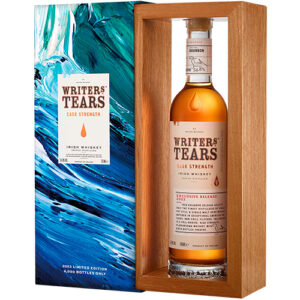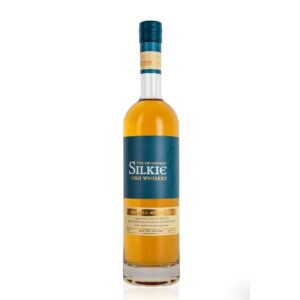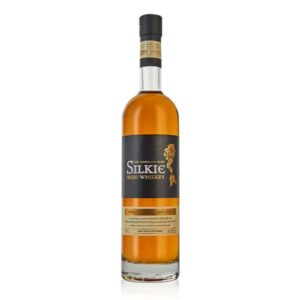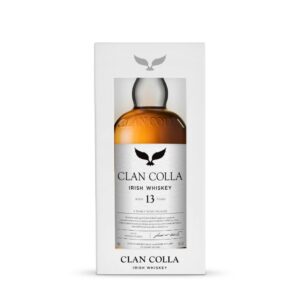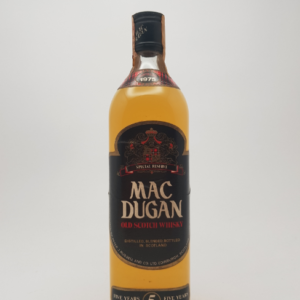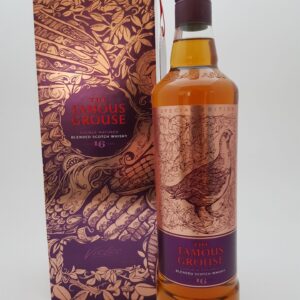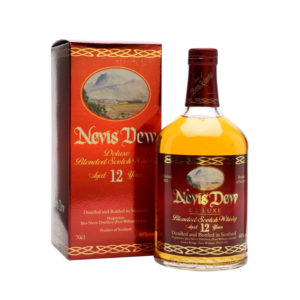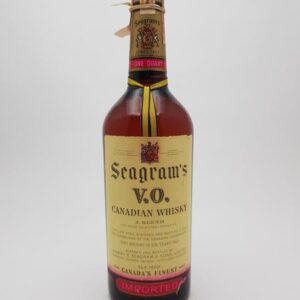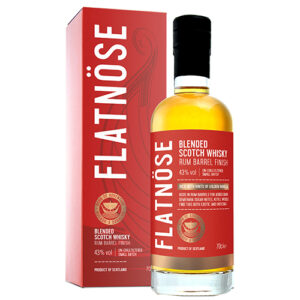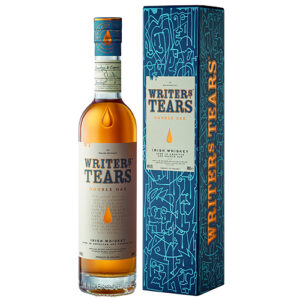Showing all 24 resultsSorted by popularity
Blended Whisky – The Complete Guide
TL;DR: Short Version
- Blended Whisky is characterized by combining multiple single malt and grain whiskies to create a consistent flavor profile
- Produced primarily from malted barley and other grains, defined by the master blender’s art of harmonizing diverse whisky styles
- Found in several styles, including Scotch Blended Whisky, Irish Blended Whisky, and Premium Blended Whiskies
- Best enjoyed in a tulip-shaped glass at room temperature and can be experienced in cocktails like the Rusty Nail or Rob Roy
Disclaimer: This guide is intended for informational purposes for adults over 18 years of age. Vault of Spirits encourages responsible alcohol consumption.
Introduction to Blended Whisky
Blended Whisky has a rich history and fascinating craftsmanship behind it. From its origins in Scotland to its global popularity today, this spirit type has evolved to become one of the world’s most treasured.
This guide provides insights into the production, flavor notes, and enjoyment of blended whisky, whether you’re a beginner or experienced enthusiast.
While single malts often receive the most attention from connoisseurs, blended whiskies account for over 90% of global whisky sales, highlighting their significance in the whisky world.
How Did Blended Whisky Originate?
From Past to Present
Blended whisky emerged in Scotland during the 19th century, primarily through the innovations of pioneering merchants like Andrew Usher.
Before blending became common practice, single malt whiskies were often harsh and inconsistent in quality.
The art of blending developed as a way to create smoother, more approachable whiskies by combining the character of malt whiskies with the lightness of grain whiskies.
This innovation transformed whisky from a regional specialty into a globally marketable product.
Which Historical Milestones Have Shaped Blended Whisky?
The invention of the continuous still in 1831 by Aeneas Coffey revolutionized the production of grain whisky, providing blenders with consistent neutral spirits to mix with flavorful malts.
Andrew Usher’s creation of Old Vatted Glenlivet in the 1860s is often cited as the first commercial blended Scotch, setting the stage for the category’s success.
The phylloxera epidemic in the 1880s devastated European vineyards, causing cognac shortages and creating an opportunity for blended Scotch to fill the void in the premium spirits market.
The establishment of iconic brands like Johnnie Walker, Chivas Regal, and Ballantine’s in the late 19th and early 20th centuries cemented blended whisky’s international reputation.
How Has Blended Whisky Influenced Cultural Traditions?
Blended whisky became a symbol of British culture and was exported throughout the Empire, helping establish whisky drinking traditions worldwide.
In Japan, imported Scotch blends inspired the birth of a domestic whisky industry that would eventually develop its own blending traditions.
The accessibility of blended whiskies helped democratize whisky consumption, transforming it from a regional specialty to a global phenomenon.
Blended whisky has become intertwined with social rituals across cultures, from business meetings in Asia to after-work drinks in the West.
Why Is Blended Whisky Popular Today?
Blended whisky offers consistency and value that appeals to both casual drinkers and enthusiasts on a budget.
Its smoother, more approachable profile makes it ideal for introducing newcomers to whisky.
The versatility of blended whisky in cocktails has driven its resurgence in the craft cocktail movement.
Premium blended whiskies now compete with single malts for prestige, with limited editions and special releases attracting collectors.
How Is Blended Whisky Made?
Which Raw Materials Are Used in Production?
Blended whisky combines two distinct whisky types, each with their own ingredients and production methods.
Primary ingredients:
- Malted Barley – The foundation of malt whisky, providing complex flavors and natural enzymes
- Other Grains – Corn, wheat, and unmalted barley are commonly used in grain whisky production
- Water – Source water quality significantly impacts whisky character
The ratio of malt to grain whisky varies widely between blends, with premium offerings typically containing higher percentages of malt whisky.
How Does the Fermentation Process Work?
For malt whisky components, malted barley is milled, mixed with hot water in a mash tun, and the resulting liquid (wort) is fermented with yeast for 48-72 hours.
Grain whisky components undergo a similar process but often use a combination of grains and industrial enzymes to aid conversion of starches to sugars.
Fermentation creates a beer-like wash of approximately 8-9% ABV, developing crucial flavor compounds that persist through distillation.
Different yeast strains and fermentation times create varied flavor profiles that blenders can later select from.
Which Distillation Techniques Are Used?
The components of blended whisky are produced using different distillation methods, contributing to their distinct characteristics.
Common distillation methods:
- Pot Still Distillation – Used for malt whisky, preserves more flavor compounds and creates richer spirits
- Column Still Distillation – Used for grain whisky, creates lighter, purer spirit at higher alcohol strengths
- Double or Triple Distillation – Some components may undergo multiple distillations for increased refinement
These different distillation methods create the palette of whisky styles that master blenders draw from.
What Is the Significance of Maturation?
Both malt and grain whiskies must be aged in oak casks, typically for a minimum of three years.
Maturation harmonizes harsh flavors, adds complexity, and imparts color and flavors from the wood.
Cask types vary widely, with ex-bourbon and sherry casks being most common, each contributing distinct flavor profiles.
After individual whiskies reach maturity, the master blender selects dozens or even hundreds of casks to create the final blend, which may then undergo a period of “marrying” in casks before bottling.
Which Regions Are Known for Blended Whisky?
Where Are the Best Variants Produced?
Scotland remains the epicenter of blended whisky production, with numerous world-famous brands including Johnnie Walker, Chivas Regal, and Dewar’s.
Ireland has a strong blended whiskey tradition, with brands like Jameson and Bushmills offering distinctive triple-distilled character.
Japan has developed an exceptional reputation for premium blends from houses like Suntory and Nikka, often combining Japanese precision with Scottish-inspired techniques.
Canada produces smooth blended whiskies that incorporate rye for a distinctive spicy character, while American blended whiskeys are increasingly gaining recognition.
How Do Geography and Climate Affect the Taste?
Regional climate affects maturation rates and flavor development – warmer regions like parts of Japan experience more rapid maturation compared to Scotland’s cooler conditions.
Water sources impart unique mineral profiles to whiskies used in blends.
Regional traditions in production techniques influence the character of the component whiskies.
Blenders can incorporate whiskies from diverse geographical regions to create complex flavor profiles impossible to achieve from a single location.
What New Trends Are Seen in Blended Whisky Production?
Craft blenders are creating small-batch blends with greater transparency about component whiskies.
Experimental cask finishing of complete blends in wine, rum, or other barrels adds new dimensions to traditional recipes.
Premium blended malt whiskies (containing no grain whisky) are gaining popularity among enthusiasts seeking complexity without single malt prices.
Some producers are exploring regional blends that showcase whiskies from specific areas rather than aiming for consistency across geographical boundaries.
What Do the Various Quality Designations Mean?
Age statements on blended whiskies indicate the youngest component in the blend – a 12-year blend may contain much older whiskies as well.
Terms like “Premium,” “Deluxe,” and “Reserve” have no legal definition but typically indicate higher quality components or older whiskies.
In Scotland, “Blended Scotch Whisky” must contain both malt and grain whiskies, while “Blended Malt Scotch Whisky” contains only malt whiskies from multiple distilleries.
Some regions have specific requirements – Japanese whisky regulations were recently tightened to ensure authenticity of origin.
How Does Blended Whisky Taste?
What Characterizes the Typical Flavor Profile?
Blended whisky typically aims for balance and approachability, with smooth integration of diverse flavor components.
Typical aromatic and flavor notes include vanilla, caramel, dried fruit, spice, and subtle smoke.
Typical aromas:
- Sweet Notes – Honey, vanilla, caramel, toffee
- Fruit Notes – Apple, pear, citrus, dried fruits
- Spice and Wood – Cinnamon, nutmeg, oak, cedar
The mouthfeel is generally smoother and lighter than single malts, making them more approachable for newcomers to whisky.
How Does the Taste Vary Between Different Styles?
Scotch blends often feature subtle smoke and malt character balanced by lighter grain components.
Irish blended whiskeys typically offer a smoother, lighter character with pronounced cereal notes and less smokiness.
Japanese blends frequently emphasize delicacy, refinement, and floral notes.
Canadian blends usually showcase a distinctive spiciness from rye grain, while American blended whiskeys often feature sweeter corn-based profiles.
How Does the Flavor Develop with Age?
Younger blends (3-5 years) typically show more grain character, spirity notes, and less complexity.
Mid-aged blends (8-12 years) develop richer malt character, more integrated flavors, and smoother mouthfeel.
Older blends (15+ years) showcase deeper oak influence, concentrated dried fruit notes, and subtle oxidative qualities.
Ultra-aged premium blends (21+ years) can develop exceptional complexity with antique furniture notes, tropical fruits, and exceptional length of flavor.
What Signs Reveal High Quality?
Balance is paramount – no single flavor should dominate, and the transition from nose to palate to finish should be coherent.
Complexity indicates quality components and careful blending – look for evolving flavors rather than one-dimensional character.
Texture should be smooth but substantial, without harsh alcohol burn or watery mouthfeel.
The finish should be clean and lingering, with flavors that evolve rather than simply fading away.
How Is Blended Whisky Best Enjoyed?
What Is the Optimal Serving Method?
For appreciating the full character, serve neat in a proper whisky glass at room temperature.
A small splash of spring water can open up aromas and flavors, especially in higher-proof blends.
Ice is acceptable for casual drinking but will suppress some aromas and flavors.
Many blended whiskies are specifically crafted to work well in long drinks with mixers like soda water or ginger ale.
Which Glass and Temperature Are Ideal?
A tulip-shaped glass like a Glencairn concentrates aromas while allowing appreciation of color and legs.
Room temperature (60-65°F/15-18°C) is ideal for evaluating all aspects of the whisky.
If preferred slightly cooler, chill the glass rather than the whisky to preserve aromatic compounds.
For cocktails, the glass choice should match the drink style – rocks glasses for short drinks, highballs for long drinks.
How Do You Taste Like an Expert?
Observe the color for hints about cask influence and potential age.
Nose gently at first, then more deeply, noting how aromas develop with time in the glass.
Taste with a small sip, letting it coat your entire palate before swallowing.
Assess flavor progression from entry to mid-palate to finish, noting how flavors evolve.
Add a few drops of water and repeat the process, comparing differences in aroma and flavor intensity.
Which Dishes Complement Blended Whisky?
Lighter blends pair well with seafood dishes, particularly smoked salmon or grilled white fish.
Richer blends complement red meat dishes, especially slow-cooked stews or roasts.
The caramel and vanilla notes in most blends pair wonderfully with chocolate desserts.
Hard cheeses like aged cheddar or gouda can bring out subtle fruit notes in the whisky.
Which Cocktails Can Be Made with Blended Whisky?
Which Classic Cocktails Should You Know?
Blended whisky’s balanced profile makes it ideal for cocktails, where it provides character without overwhelming other ingredients.
Rob Roy
- Ingredients: 2 oz blended Scotch whisky, 1 oz sweet vermouth, 2 dashes Angostura bitters
- Preparation: Stir with ice and strain into a chilled coupe glass; garnish with a cherry
- History: Created in 1894 at the Waldorf Astoria in New York, named after a Scottish folk hero
Rusty Nail
- Ingredients: 2 oz blended Scotch whisky, ½ oz Drambuie
- Preparation: Build in a rocks glass with ice; stir gently to combine
- History: Became popular in the 1950s, named for its rusty color and the occasional use of a rusty nail as a stirrer
Which Modern Cocktails Are Worth Trying?
Penicillin – A contemporary classic featuring blended Scotch, honey-ginger syrup, lemon juice, and a float of peaty single malt.
Blood and Sand – Equal parts blended Scotch, sweet vermouth, cherry liqueur, and orange juice create a surprisingly harmonious combination.
Japanese Highball – A precise, minimalist approach combining blended whisky with highly carbonated water over crystal-clear ice.
Godfather – A simple yet effective combination of blended Scotch and amaretto that’s greater than the sum of its parts.
How Is Blended Whisky Enjoyed Neat?
Neat in a proper whisky glass allows appreciation of the blender’s art in creating a balanced spirit.
On the rocks appeals to those who prefer a slightly chilled, progressively diluted experience.
With a splash of still water can enhance aromatic compounds and soften alcohol perception.
Highball style with soda water and ice creates a refreshing long drink that preserves whisky character.
Which Homemade Variants Can You Experiment With?
Infuse blended whisky with dried fruits like figs or apricots for a sweet, rich homemade liqueur.
Create custom blends by mixing different commercial blended whiskies to suit your personal taste.
Make whisky-based bitters by infusing blended whisky with botanicals for use in cocktails.
Try fat-washing blended whisky with coconut oil or bacon fat for unique savory cocktail bases.
What Should You Know Before Buying Blended Whisky?
Which Details Should You Pay Attention to When Buying?
Age statements indicate the youngest whisky in the blend – higher numbers generally indicate greater maturity and potentially more complexity.
Brand reputation matters – established blenders with long histories often maintain consistent house styles across generations.
Look for information about component whiskies – some producers are increasingly transparent about the distilleries or regions represented.
Special editions or limited releases often feature unique cask finishes or higher proportions of rare malt whiskies.
What Do You Get for Your Money in Different Price Ranges?
Entry-level blends ($15-25) offer decent everyday drinking options but often contain young whiskies with prominent grain components.
Mid-range blends ($25-50) provide better balance, more malt character, and often carry age statements of 8-12 years.
Premium blends ($50-100) feature higher proportions of well-aged malt whiskies, creating more complexity and depth.
Ultra-premium blends ($100+) showcase exceptional component whiskies, often with significant age, and can rival single malts in complexity and prestige.
How Is Blended Whisky Properly Stored?
Keep bottles upright to prevent the high alcohol content from degrading the cork.
Store in a cool, dark place away from direct sunlight, which can fade the color and potentially affect flavor.
Once opened, consume within 1-2 years for optimal flavor, as oxidation gradually affects the whisky.
If the bottle is less than one-third full, consider transferring to a smaller container to minimize oxidation.
Is Blended Whisky a Good Investment?
Generally, blended whiskies are not considered prime investment vehicles compared to single malts.
Exceptions include limited editions from prestigious brands, particularly those with significant age statements.
Vintage blends from defunct distilleries or using historic recipes can appreciate in value.
The primary value of most blended whiskies lies in their enjoyment rather than potential financial return.
Which Brands Do We Recommend?
What Is Best for Beginners?
Johnnie Walker Black Label offers an excellent introduction to blended Scotch with its balanced profile and hint of smoke.
Chivas Regal 12 provides a smooth, approachable entry point with honeyed sweetness and gentle spice.
Famous Grouse delivers reliable quality at an accessible price point, making it ideal for exploring blended whisky in cocktails.
Jameson Irish Whiskey presents a lighter, approachable style that’s exceptionally friendly to newcomers.
What Will Impress Enthusiasts?
Johnnie Walker Blue Label represents the pinnacle of mainstream blending, with remarkable complexity and smoothness.
Compass Box Hedonism breaks conventions with its blended grain whisky approach, offering vanilla-rich elegance.
Hibiki Japanese Harmony showcases Japanese blending precision with a delicate, floral character.
Chivas Regal 18 delivers sophisticated depth with dried fruit and chocolate notes in perfect balance.
Which Bottles Are Most Coveted?
Rare vintage releases of Johnnie Walker like King George V or The John Walker represent the apex of the blender’s art.
Limited edition Royal Salute releases, particularly those with 38+ years of aging, command premium prices and collector interest.
Compass Box’s limited editions like Three Year Old Deluxe attract enthusiasts for their innovative approaches and transparency.
Historic bottles of discontinued blends like White Horse or Black & White from the mid-20th century are sought after by collectors.
Where Do You Get the Most for Your Money?
Monkey Shoulder offers exceptional value as a 100% blended malt with no grain whisky, delivering remarkable complexity for its price.
Johnnie Walker Green Label provides the richness of blended malt whisky at a fraction of the price of comparable single malts.
Bank Note 5 Year Old delivers surprising quality at a budget price point, making it ideal for everyday enjoyment.
Dewar’s 12 Year Old Double Aged undergoes an additional aging process after blending, creating extra smoothness at a reasonable price.
Frequently Asked Questions
What Is Blended Whisky?
Blended whisky is a spirit created by combining different types of whisky – typically malt whisky and grain whisky – to achieve a consistent flavor profile.
In Scotland, blended whisky must contain both malt and grain whiskies, while “blended malt” contains only malt whiskies from different distilleries.
The skill lies in the master blender’s ability to maintain a consistent house style despite variations in the component whiskies.
How Is Blended Whisky Produced?
Component whiskies are individually distilled and matured at their respective distilleries.
The master blender selects casks of different whiskies based on their flavor profiles and how they’ll work together.
These whiskies are combined in large vats according to closely guarded recipes that may include dozens of different spirits.
After blending, the whisky may undergo a “marrying” period before being diluted to bottling strength and packaged.
What Characterizes Blended Whisky?
Consistency is the hallmark of blended whisky – major brands maintain remarkably stable flavor profiles across decades.
Balance between different flavor elements without any single characteristic dominating.
Approachability that makes them accessible to a wide range of palates.
Versatility in consumption – equally suitable for enjoying neat, in cocktails, or with mixers.
Where Can You Buy Blended Whisky?
Blended whiskies are available at virtually all liquor retailers, from supermarkets to specialty spirits shops.
Online retailers offer extensive selections, often with detailed tasting notes and customer reviews.
Duty-free shops at airports frequently carry exclusive travel retail editions of popular blends.
Auction sites are the best source for rare, discontinued, or vintage blended whiskies.
